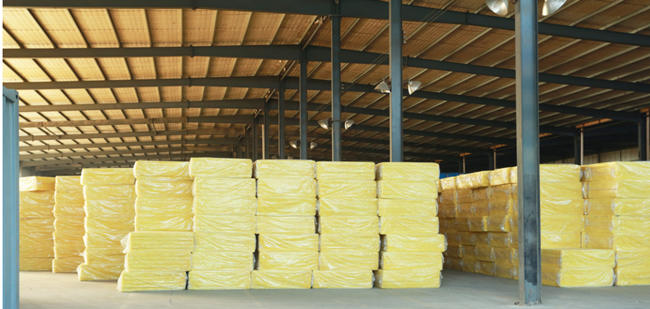Posted by: Date:10.Jan.2023
Regarding the development trend of
thermal insulation materials, the use of good thermal insulation materials in construction and industry can often achieve twice the result with half the effort. Statistics show that for every ton of mineral wool insulation products used in construction, one ton of oil can be saved a year. For the insulation of industrial equipment and pipelines, the use of good insulation measures and materials can significantly reduce production energy consumption and costs, improve the environment, and have good economic benefits. For example, in industrial equipment and pipeline engineering, good thermal insulation conditions can reduce heat loss by about 95%. Usually, the investment in thermal insulation materials can be recovered by saving energy for about one year. It can be seen that good quality is the top priority in the development of thermal insulation materials from beginning to end.

In addition, the hydrophobicity of thermal insulation materials and the development of new thermal insulation materials are also an important direction of research: the water absorption of materials is an important factor that should be considered when selecting thermal insulation materials, and the thermal conductivity of water at room temperature is 23.1 times that of air. After the heat insulation material absorbs water, it will not only greatly reduce its heat insulation performance, but also accelerate the corrosion of the metal, which is very harmful. The pore structure of thermal insulation materials is divided into connected type, closed type, and inherently closed type. The material itself absorbs water, and the capillaries connecting the gaps penetrate and absorb water, so the overall water absorption rate is very high. At present, most of the insulation materials in our country are not hydrophobic and have high water absorption rate, so the waterproof requirements of the outer sheath are very strict, which increases the cost of the outer sheath. At present, organosilicon hydrophobizers among modifiers are a kind of high-efficiency water repellent commonly used in thermal insulation materials. Its hydrophobic principle is to use the strong chemical affinity between organosilicon compounds and electrodeless silicate materials. To effectively change the surface properties of silicate materials to achieve a hydrophobic effect. It has the characteristics of good stability, low cost and simple construction process.
Regarding new materials, at present, several new insulation materials have appeared, such as nanoporous insulation materials, asbestos substitutes for composite insulation materials, etc. Nanoporous insulation materials: With the continuous development of nanotechnology, nanomaterials are becoming more and more popular. Nanoporous silicon thermal insulation material is a new application of nanotechnology in the field of thermal insulation materials. The size of most of the pores in the material should be in the nanometer scale. According to molecular motion and collision theory, gas heat transfer is mainly through the high-speed molecules on the high-temperature side colliding with the low-speed molecules on the low-temperature side to transfer energy. Since the freedom degree of nitrogen and oxygen, the main components in the air, is about 70 nanometers, if the size of the silicon dioxide particles in the nanoporous silicon insulation material is smaller than this critical size, convection will be eliminated inside the material. The thermal conduction of gas molecules is cut off, so that the lower thermal conductivity of non-convective air is obtained. In addition, in recent years, with the rapid development of my country's socialist construction, the production of glass wool and its products has continuously improved in quality and variety (glass wool felt, seamed felt, veneer seamed felt, shell and cotton Board, etc.), has been widely used in petroleum, chemical industry, transportation, vehicle and ship manufacturing, machinery manufacturing, industrial construction, etc. For inorganic thermal insulation materials such as composite silicate thermal insulation materials, the focus of research should be on reducing energy consumption in the production process, limiting dust and fiber emissions, and reducing the amount of binder used. The focus of research on organic insulation materials (such as polystyrene foam insulation materials, polyurethane foam, etc.) should be to find a more suitable foaming agent to replace F11; improve the flame retardancy of the material and reduce the production cost of the material.
Therefore, while the market has increasingly stringent requirements on the quality of thermal insulation materials, it is also important to develop various new thermal insulation materials, multi-functional composite thermal insulation materials, improve the thermal insulation efficiency of products and expand the application of products. A foothold for better development.
